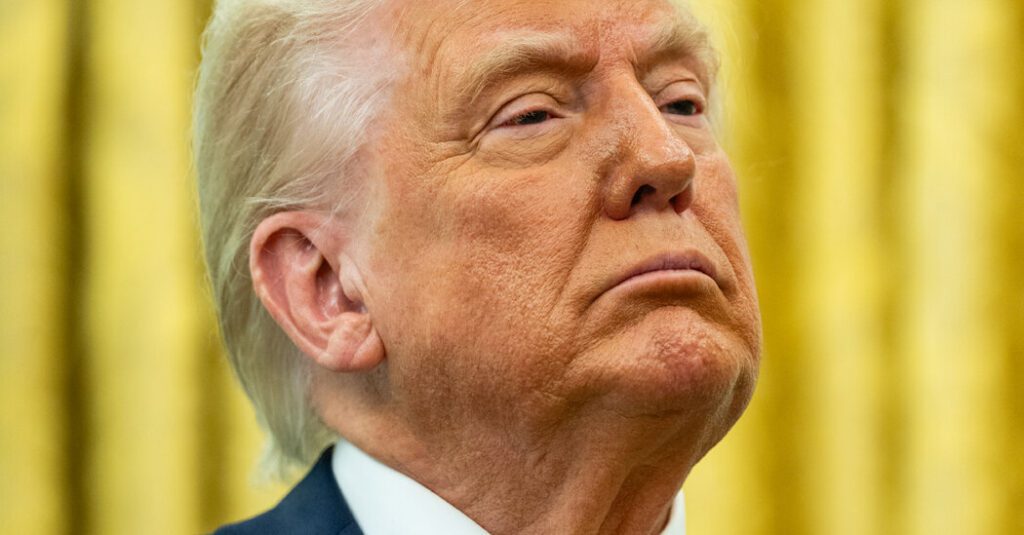Examining President Trump’s Approval Ratings
Current Trends in Approval Ratings
Recent polling data compiled by The New York Times reveals that President Trump’s job approval rating has decreased gradually since the beginning of his second term. Currently, his approval stands at approximately 45%, a notable decline from an initial 52% just a week following his inauguration.
This decline is significant as it indicates that, unlike many of his predecessors who typically enjoy a surge of support upon taking office, Trump’s approval has fallen at a more rapid pace. His starting approval rating was already the second lowest recorded for a president in modern history.
Understanding the Polling Data
The New York Times assembles its approval ratings from a variety of polls to mitigate biases present in individual surveys. This averaged approach aims to provide a clearer picture of public sentiment over time.
While the average rating serves as a valuable tool for tracking trends, it does not delve into specific causes behind the changes in approval ratings, such as Trump’s controversial trade policies or other actions taken since he resumed office.
Impact of Policies on Public Perception
Following the implementation of extensive global tariffs via executive order, a slight downturn in Trump’s approval ratings was observed. However, the timing and context of polling around the tariff announcement make it challenging to accurately assess its impact.
As part of a broader strategy, Trump aims to reshape various facets of American governance and economics, from immigration reform to educational and legal system overhauls.
Responses from the Voting Public
Despite the drop in overall approval ratings, support among Republican voters has remained relatively stable. Contrarily, independents, who are crucial in election outcomes, have shown increasing dissatisfaction. Recent polling from Quinnipiac indicates that while approval among independent voters was at 41% in January, it plummeted to 36% by mid-April, accompanied by a rise in disapproval to 58%.
Pollsters continue to face challenges in fully capturing the depth of Trump’s support. Historical data suggests a consistent underestimation of his approval ratings leading up to elections, though current metrics indicate net negative approval ratings even from more accurate polling sources.
Trump’s Perspective on His Performance
President Trump continues to assert that his term has been highly successful, citing achievements such as significant reductions in illegal immigration, increased domestic investments, and positive outcomes for Americans detained overseas.
Furthermore, he has hinted at prospective trade agreements that might improve economic conditions, promising a future where “everyone’s going to be happy,” as stated during a recent press interaction outside the White House.


